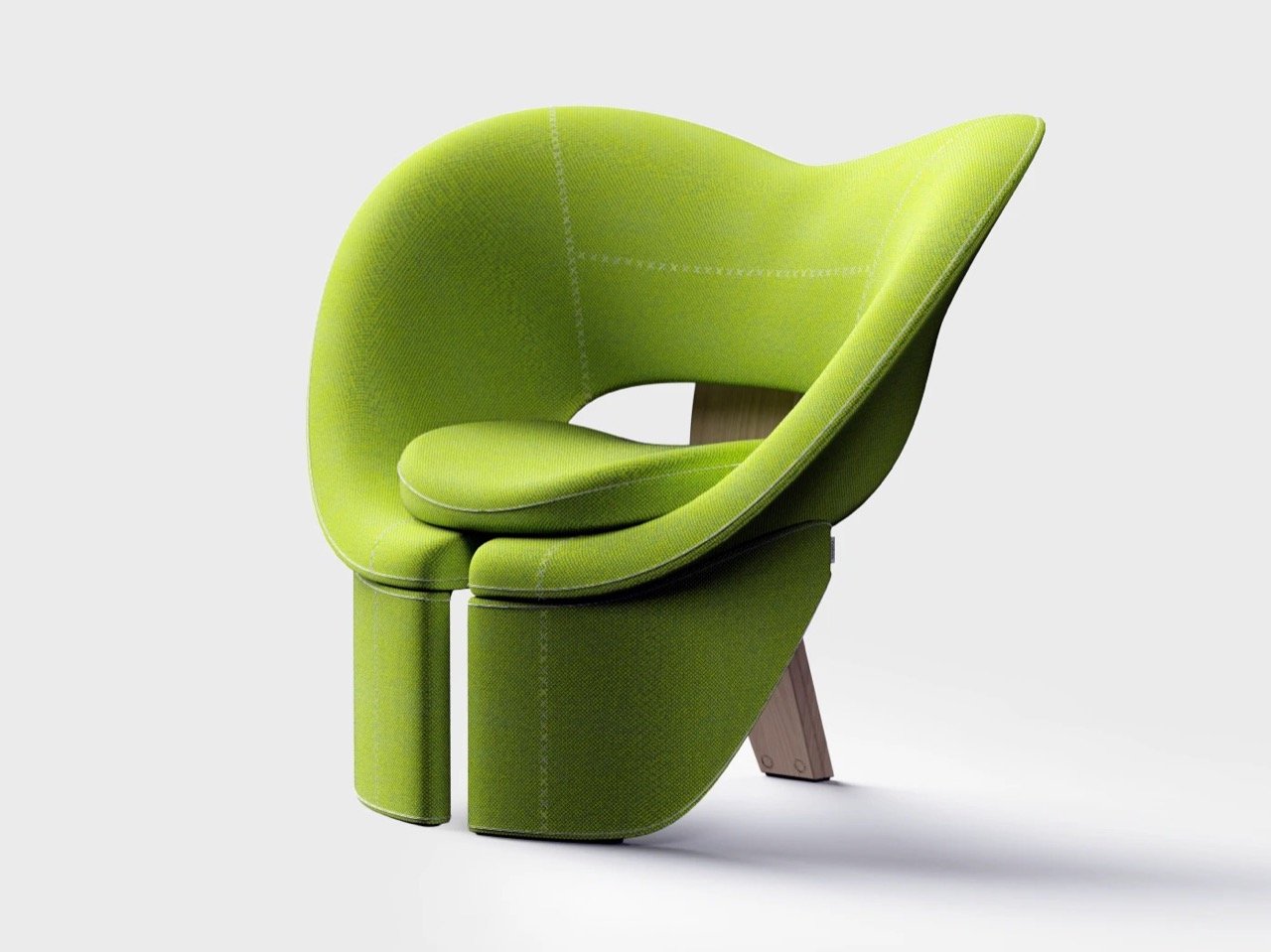Furniture often aspires to fit the body, but the Himalaya Pelvis Chair goes a step further, finding its very silhouette in the structure of the pelvis. This direct translation from biology to design yields a chair that feels organic, functional, and distinctly new; an object where comfort and concept are literally intertwined. Designers Mingyu Seo and Eojin Jeon have put this piece on Behance as part of their ‘Himalaya’ project, and it is one of those rare finds that genuinely makes you reconsider the relationship between our bodies and the objects we use daily. They are not simply hinting at a natural form, they are replicating its functional essence. The chair’s entire premise is built on the pelvic bone’s ability to cradle and support, a principle translated directly into a piece of seating.
We have seen biomimicry in furniture for decades, from the subtle curves of an Eames lounger to the algorithmic bone structures of Joris Laarman’s work. Yet, the Pelvis Chair feels different because its reference is so unapologetically direct. It sidesteps the abstract and instead presents a clear, almost educational, link between its form and its inspiration. This is not a vague nod to nature; it is a deep dive into anatomical engineering. The success of such a literal approach is precarious, as it could easily have ended up looking like a prop from a medical school. Instead, the execution is so refined that it transcends its source material to become something genuinely elegant.
Designers: Mingyu Seo and Eojin Jeon
The two variants on display show a smart understanding of material context. The vibrant green upholstered version uses a heavy-duty textile with a noticeable weave, suggesting durability alongside its visual softness. The prominent stitching, especially the cross-stitch details, is not just decorative; it articulates the chair’s curves and gives it a hand-finished, almost bespoke quality. Contrast that with the speckled blue model, which appears to be a molded polymer or a composite resin, a choice that shifts the chair’s character from a cozy lounge piece to a durable, sculptural object suitable for public spaces or minimalist interiors. The support structure, a Y-shaped leg in either brushed aluminum or light-finished wood like ash or oak, is fastened with exposed hardware, giving the whole thing an honest, engineered feel.
Its comfort seems baked right into the concept. The deep, contoured seat and high, enveloping back are direct translations of the iliac crest and sacrum, designed to hold the sitter securely. That keyhole-shaped opening at the base of the back is a brilliant touch, referencing the sacral opening while also reducing the visual mass of the chair and likely adding a bit of flex. This is where the design proves its intelligence; the anatomical mimicry serves an ergonomic purpose, not just a narrative one. The Pelvis Chair succeeds where many high-concept pieces fail. It manages to be intellectually rigorous without sacrificing aesthetic appeal or functional comfort, making it one of the more interesting conceptual furniture pieces to surface this year.
The post Would You Sit in a Chair Shaped Like a Human Pelvis? first appeared on Yanko Design.

